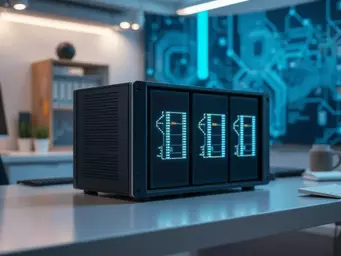Blockchain Transaction Flow
1. Transaction Broadcast
2. Validation & Block Formation
3. Block Added to Chain

Have you ever thought about how a simple transaction can ripple through a vast network of computers, turning a virtual currency into a real-world asset? In this exploration of blockchain technology, we uncover the core principles that make it the backbone of Bitcoin and beyond.
The core processes and consensus mechanisms that power blockchain technology, offering a clear comparison of how transactions are handled and validated.
1. Transaction Broadcast
2. Validation & Block Formation
3. Block Added to Chain
Mechanism: Miners solve complex mathematical puzzles.
Resource: Consumes significant energy.
Example: Utilized by Bitcoin.
Mechanism: Validators stake coins as collateral.
Resource: More energy-efficient.
Example: Growing in popularity.

Have you ever wondered what makes Bitcoin tick? At its heart is blockchain technology, a revolutionary system that’s transforming how we think about transactions and trust. To kick off our journey, let's dive into the foundational concepts of blockchain and discover how they apply to Bitcoin and beyond!
Simply put, a blockchain is a digital ledger that records transactions across many computers. This decentralized approach ensures that no single entity has control over the entire system, making it transparent and secure. Imagine a shared notebook where everyone can write, but once something is written down, it can’t be erased—that’s the beauty of blockchain!
Let’s break down some key features that make blockchain so special:
These features work together to enhance security and trust, ultimately making blockchain a vital component of the future of finance, as highlighted in various reports on DeFi risks and opportunities from the U.S. Treasury.
Now, let's talk about the players in this network: nodes and miners. Nodes are computers that maintain a copy of the blockchain, ensuring that everyone has access to the same information. Miners, on the other hand, validate transactions and add them to the blockchain by solving complex mathematical problems—a process known as mining. Think of miners as the guardians of the network!
When a transaction occurs, it goes through a series of steps:
This process happens quickly, ensuring that transactions are recorded in real-time and are accessible to all network participants.
Finally, let’s touch on consensus mechanisms. These are protocols that ensure all nodes agree on the current state of the blockchain. The two most common mechanisms are:
Understanding these mechanisms helps clarify how different blockchains operate and the implications for their security and efficiency.
As you delve deeper into blockchain technology, what aspect excites you the most? Is it the decentralization, the security, or perhaps the potential for innovation? Share your thoughts below:
As we wrap up our exploration of blockchain technology, it's vital to understand its profound influence on the world of finance and beyond. Blockchain forms the backbone of Bitcoin, enabling secure, transparent transactions without the need for intermediaries. This decentralized approach not only enhances security but also fosters trust among users. Recognizing these fundamentals is crucial, especially for newcomers eager to explore cryptocurrencies, as detailed in congressional research on understanding digital assets.
In this section, we’ll recap the essential connections and implications of blockchain technology, making it clear why understanding it is a stepping stone for anyone interested in Bitcoin. So, let’s dive deeper into the relationship between blockchain and Bitcoin!

When I first started learning about Bitcoin, I quickly realized that blockchain isn't just a technical term; it’s the core of what makes Bitcoin functional. Here are some key points to consider:
Understanding these concepts is important not just for using Bitcoin but also for grasping the broader implications of blockchain technology in various industries. The ability to make informed decisions is a game-changer in today’s digital age!
If you're excited about diving deeper into blockchain, I encourage you to start with the basics. Here’s how you can begin:
These steps can significantly enhance your understanding and comfort level with blockchain. Remember, learning is a journey, and you don’t have to rush it—take your time!
Blockchain is a decentralized digital ledger that records transactions across many computers, ensuring transparency and security without central authority.
Key features include decentralization (no single control), immutability (transactions cannot be altered), and cryptography (secure data protection).
Transactions are broadcast to the network, validated by miners who group them into blocks, and then added permanently to the existing blockchain.
These are consensus mechanisms. PoW involves miners solving complex puzzles (used by Bitcoin), while PoS involves validators staking coins as collateral (more energy-efficient).
Blockchain is the underlying technology, while Bitcoin is the first and most well-known cryptocurrency built upon that technology.
No, blockchain technology has applications beyond cryptocurrencies, including supply chain management, healthcare, and digital identity.
Many countries are developing regulatory frameworks for cryptocurrencies and digital assets. For example, the IRS provides guidance on filing taxes for digital assets, indicating their growing recognition in traditional financial systems.
The future of cryptocurrency—and blockchain technology—is bright, but it's also evolving rapidly. We're seeing increased interest from governments and institutions, leading to discussions on regulation. Here are some trends to keep an eye on:
Staying informed about these trends can help you navigate the landscape of cryptocurrency wisely. Let’s keep the conversation going and embrace the future together!
Here is a quick recap of the important points discussed in the article:
Understanding Blockchain Security Basics

As the world evolves rapidly in the realm of cryptocurrency, understanding the intricate security me
Understanding Blockchain Nodes Simply

Ever wondered how transactions maintain integrity in a decentralized world? The answer lies in the e
Understanding Blockchain Security Basics
Create a blog post title that is 5 words or less for a post that is about the following "Bitcoin Mining Software Comparison: Features and Setup Guides" Please avoid superlatives. Please avoid the futuristic, superlative, robotic-type language. provide the title only and no other details.
Understanding Blockchain Nodes Simply
Set Up Your Bitcoin Wallet
Choosing the Right Bitcoin Wallet